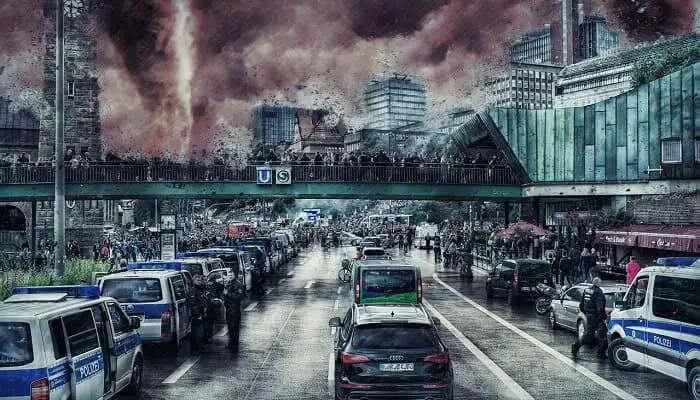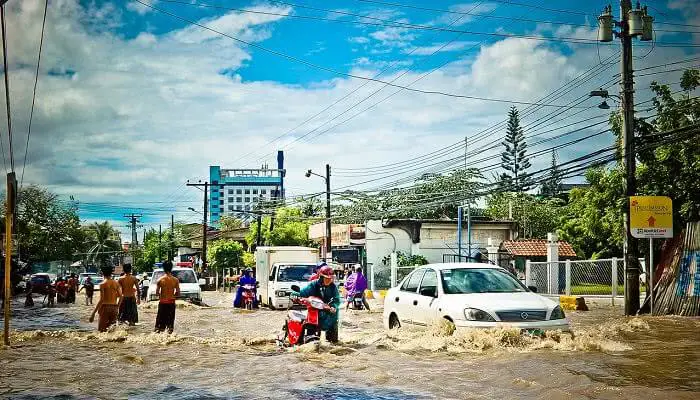Introduction – Resilience in Cities
Urban resilience is a method for cities to recover from hardships to their normal state. Cities have different ways of dealing with resilience and different cities face hardships in different ways. Recently, the most widely recognised ways of resilience are from Climate Change, Natural Disasters, and Terrorism. This is because all of these three threats to cities can have devastating effects to people living in the cities and it usually takes many years or decades to recover from these hardships to the built environment. Resilience connects people to their built environment, since people inhibit buildings and if the buildings are affected by disasters, then it inevitably affects people living inside the buildings. Many cities, rich and poor, have faced adversity such as New York’s 911 event which is one of the most devastating terrorist attacks to date. Many cities around the world including cities in India have experienced high levels of floods during monsoon season and extreme levels of heat and cold during summer and winter and even earthquakes in cities like Pune have affected India’s built environment. This is an example of the ways in which climate change and natural disasters affect cities.

Related theories dealing with Urban Resilience
Resilience theory has recently tried to make people adapt to the disasters in their cities so that they don’t depend on their government for resources. Many private firms, such as Rockefeller Foundation, have also invested in building urban resilience in many cities worldwide. Monetary needs should be distributed in ways that ensure adaptability in the society. There have been different methods in which communities have endured floods and natural hazards. Most common method is to evacuate to a safer zone and wait till the city has recovered from the hazard. Although this is useful in an immediate state, relocating to a new place and losing personal belongings can have enormous effects on families and the society. There are many theories including engineering theory for resilience which have indicated different methods of recovery.
Related: Good Public Transportation- A necessity for sustainable settlements
When it comes to community resilience, Birkland and Waterman (2009) propose three features of community resilience which are damage prevention, speedy recovery, and preservation of community functionality, indicating that when the community is more adaptable and capable of tolerating stress, the recovery of the community and the city will be faster. Urban (city) and community resilience are very related and interdependent because when the facilities in the cities are under threat, the community is more likely to be affected by it.
Practical examples of cities dealing with disaster
For instance, when Christchurch in New Zealand was affected by earthquakes in 2011, many people died in the prominent zones as the city was not planned for the disaster. However, many people left the city and evacuated due to the enormous damage done to the city. One way the city is coping with the recovery is by building more earthquake-prone architecture and buildings that sustain future disasters. Most apartments and houses in Christchurch are rebuilt and earthquake proof to bring more people into the city. The community and the council are bringing in many recovery strategies including public art as a way to bring the community together and to create a sense of pride in the city dwellers of Christchurch city. This example is a powerful way to bring back people into the city and create a cohesion among people for the loss and damage that has been previously. However, Tokyo in Japan, because of the earthquake-prone zone, has built sustainable architecture and houses to prevent damage from earthquakes.

There are many cities around the world, including New York City, which has been affected by floods. Many cities in India experience floods especially during the monsoon seasons. Evacuation techniques are not still enforced to the maximum degree in India compared to the developed countries. Assam floods in 2016 is an example of a natural disaster in India. This could be because of the role of climate change because of rising sea levels. Many people were affected by the floods in Assam and had to evacuate to other cities. In most of the cases, there is not much community resilience enforced, although people are ensured safety by the government. Fleeing the city has many serious consequences such as losing one’s job, relocation money and monetary need which is not always sufficient or available. There needs to be better strategies implemented by the Government to prevent floods by building resilient infrastructure for the cities, especially during monsoon seasons. Rockefeller Foundation has implemented the 100 resilient cities mission, which seeks to help the most disaster-affected cities in the world to become more resilient through social and economic means. Such initiatives are very useful in building more accessible infrastructure in cities and ensuring that there are enough funds and resources for recovery and providing resilience.
Conclusion
Therefore, urban resilience ensures that society can recover from unforeseen events and natural disasters. There are many ways to ensure that the community is provided the facilities in the cities to adopt resilience to these events. Having a variety of monetary means and coping mechanisms would be useful for the community. Also, educating the people about the disaster also creates a sense of resilience as they would have increased knowledge about how to cope with the stressful situation. Many communities around the world have grown in resilience and have adopted a variety of coping mechanisms. The more resilient the people in the city are to threat in the city, the better it is likely to invest in the rebuilding of the city and the community.
Also Read: Rethink the City: New Approaches to Global and Local Urban Challenges | TUDelft